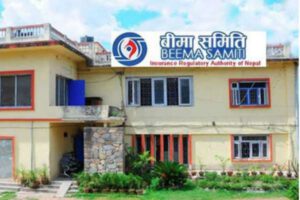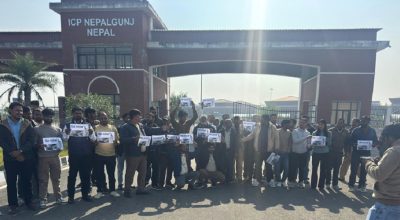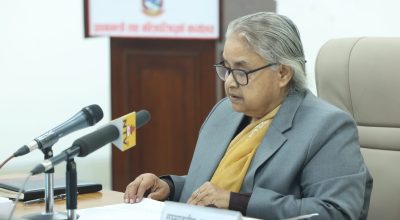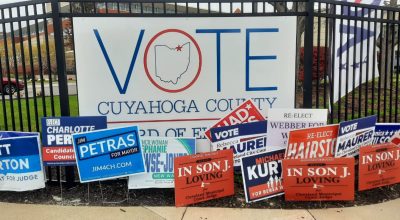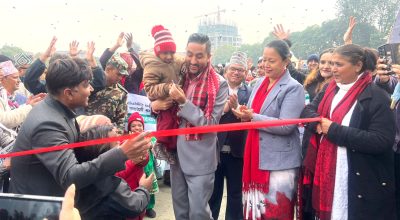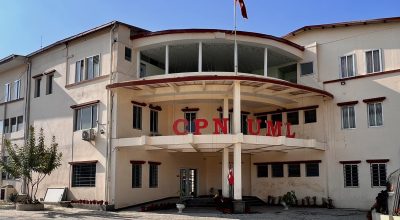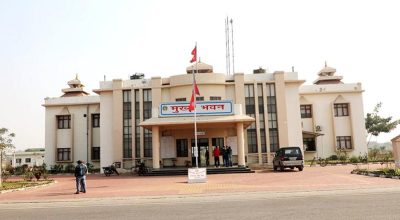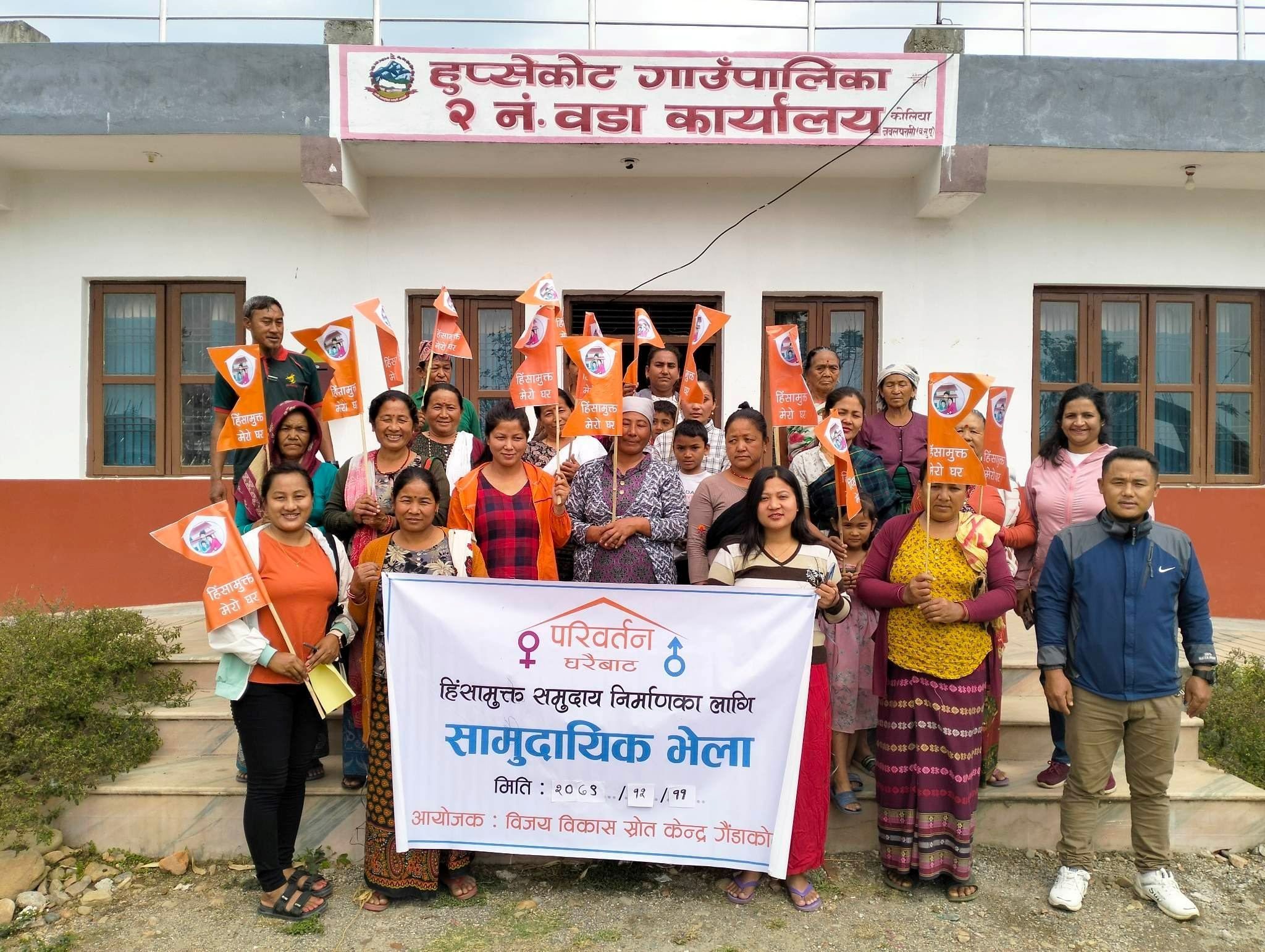
Kathmandu, Feb 23: Maniram Musahar and Indu Musahar of Bankatti, Binayi Tribeni-7 in Nawalparasi Purba got married 15 years ago. They have three daughters and two sons.
Since they do not have enough land to cultivate and feed the seven-member family throughout the year, the couple has sharecropped an agricultural land. Working as wage labourers and fishing are their other supporting occupation.
The couple had a good relationship until a few years after marriage. However, they started having troubled relationship over household issues. They had differences. Each of them started feeling suffocated within the house.
Things got to the point that they completely stopped talking to each other and their relations were on the verge of collapse. The impacts were obvious—it took their toll on their children and the entire family.
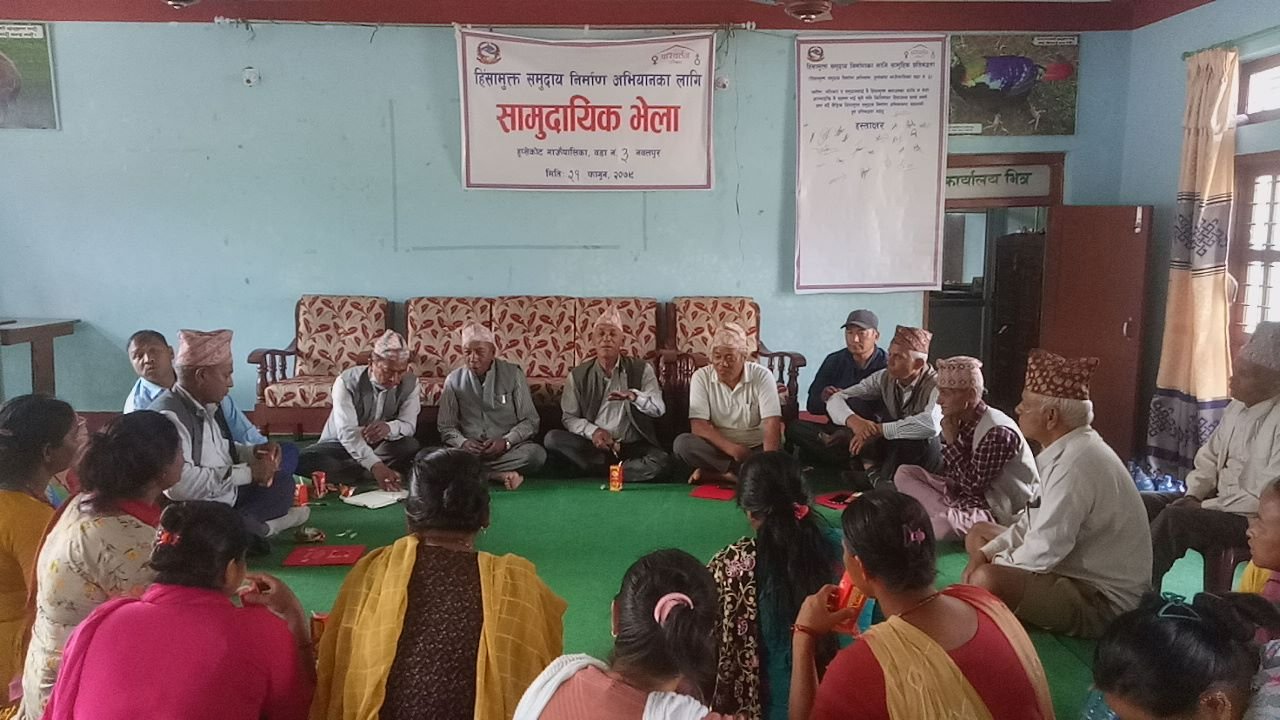
It continued until Change Starts At Home project intervened one year ago. Change Starts At Home is a social and behaviour change project aimed at reducing intimate partner violence (IPV) in Nepal through various intervention strategies.
The couple was selected under the violence free campaign (VFC) project. After participating in group discussions and community awareness programmes, the couple started self-evaluating themselves and looking into the possible reasons behind their troubled relations, and seeking ways to mend their relationship, resulting in their gradual improvement in relationship.
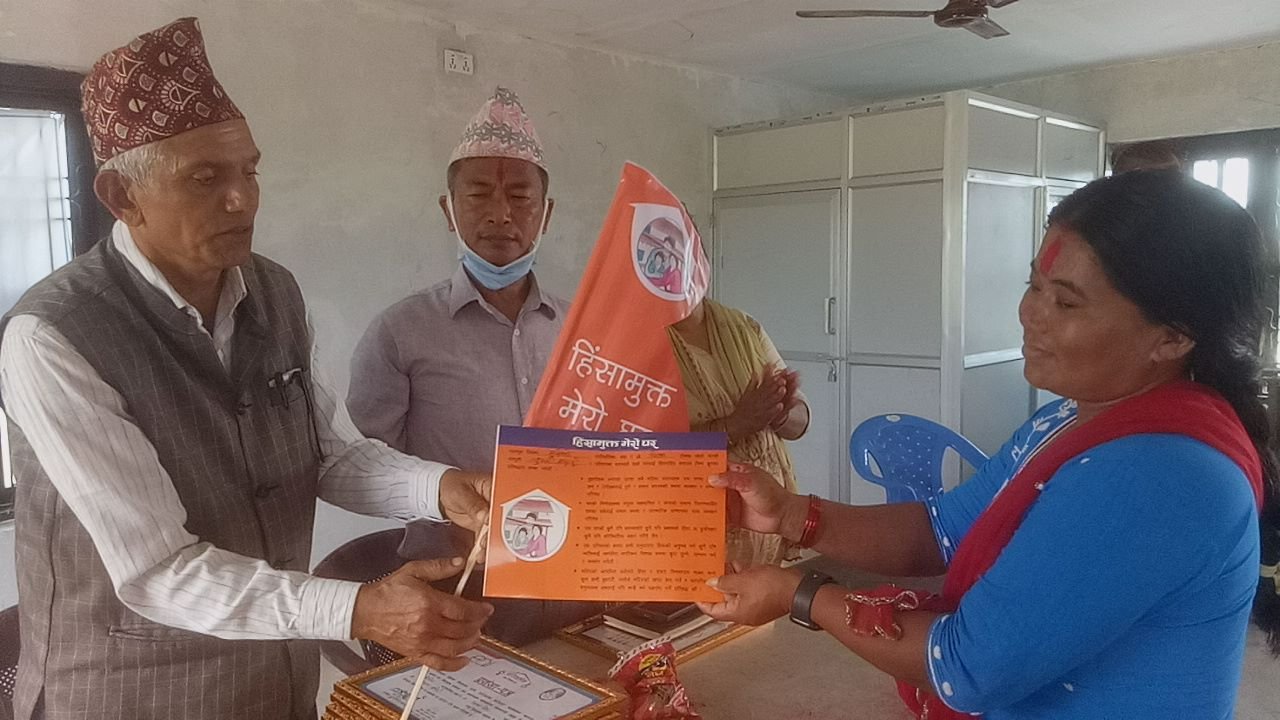
“I go to work in other people’s farmlands. My husband would to come home drunk, and fight and beat me for no reason. The frequent fighting between us had its adverse impact on our growing children. But nowadays, there are positive changes in us,” says Indu exuding smile.
The couple has now shared good relations and it is working. They are among 200 couples who have witnessed positive changes in their conjugal relationship following participation in group discussions and awareness campaigns under the VFC.
As part of the project that took place in four wards of Hupsekot Rural Municipality and six wards of Binayi Tribeni Rural Municipality in Nawalparasi East, the violence free campaigning committee (VFCC) has been formed in the total 12 wards, and one municipality with the objectives of expanding and implementing the campaign to end any forms of violence beyond couples and families into the national level, it has been said.
Under the project, for 200 selected couples, a total of 52 discussion sessions were organised which were divided into two different segments–40 weeks of questioning constructed social norms and rules, self-evaluation and realization, and changes, and eight months of 12 sessions of the diffusion of the message.
As part of 40-week sessions, the respondents divided into 40 groups were made to listen to related radio dramas, movies, and street dramas, and made to participate in group discussions, and given homework. Families of the selected couples also participated in the discussion sessions and other social activities.

Under eight months of the diffusion process (12 sessions), the participants shared what they learned from group discussions, and other awareness social activities to family members, relatives, friends, communities and entire villages.
The VFCCs, comprising 220 influential social leaders, and respective ward chairs and municipality vice chairs as patrons, are now operating with funding from the local government and community networks. Overall, this is the community-based volunteering mechanism that can facilitate prevention work within the local government mechanism, says Soham Subedi, the project director.
To serve its objectives of transforming existing social norms, key to prevent IPV, through the change interventions and their effective diffusion, the VFC committee works on only prevention activities, and recommends to the local system if it finds any issues that need urgent attentions, he adds.
As part of the VFC, activities like the proposal of distributing a letter of appreciation, flag hoisting and interactions, flag hoisting activity at home, pledge sticker pasted at home (Violence free home declaration, and five points pledge), appreciation assembly, gatherings, meeting and interactions at village, ward and rural municipality levels, ward gatherings, activities done by VFCC, and orientation for community networks, elected people’s representatives and community leaders were carried out.
With the participation of the ward offices, elected leaders, community networks, influential leaders, and municipality office, the organized diffusion was facilitated within the local government leadership. Sixty-nine splash events, 70 deep-dived events, and 56 appreciation events widely diffused IPV prevention and violence-free home messages. In the organized diffusion phase, more than 10,000 people participated in different activities.
The violence free campaign has started bearing fruits.
Overall, participants in the intervention communities demonstrated significant improvement across most primary and secondary outcomes from baseline to midline, controlling for baseline differences between the groups.
According to the report, IPV decreased by 33% and 39% for community and LDAG (listening discussion and action group) participants respectively relative to participants in the control sites. Psychological IPV decreased by 32% and 35%, sexual IPV by 31% and 27%, and physical IPV by 20% and 25% for community and LDAG participants relative to controls. Positive injunctive norms also significantly improved for both community and LDAG with an effect size of over 0.5 SD. Changes in negative descriptive norms for intervention participants were not significant relative to controls.
Gender equitable attitudes, sexual decision-making, financial decision-making, relationship quality and equity, and communication showed improvement for both intervention groups at midline. The LDAG group additionally improved on in-law violence, leadership, and GBV advocacy relative to the control group; the community group showed no significant change on these outcomes at midline.
So far since the launch of VFC, 1,168 households declared violence-free homes in Binayi Tribeni and Hupsekot Rural Municipalities.
Influenced by the positive effects of VFC, the target ward levels have allocated budget ranging from Rs 50,000 to Rs 100,000 each for the campaign. Bishnu Rana, chair of Hupsekot ward-3, expresses his readiness to continue the campaign with new plans incoming. “We in coordination with the stakeholders are coming up with news plans to make it more effective. The campaign has already started displaying effects. It could be a groundbreaking in eliminating violence among people,” he says.
According to him, in the current fiscal year, 2023/24, the ward has allocated Rs 100,000 for the project, and local Birat community forest users’ group Rs 500,000.
Globally, approximately 30% of women aged 15 and older have experienced physical and or sexual IPV at some point in their lifetime (World Health Organization, 2021). This figure does not include sexual harassment.
According to data with the Ministry of Health and Population, 2023, the 12-month prevalence of psychological, physical, and sexual IPV in Nepal was 17% in 2022 with 28% of Nepali women ever reporting one or more of these three forms of IPV (psychological 14%; physical 24%; sexual 8%). Correlates of IPV include low caste, women’s employment, income stress, poor marital communication, quarreling, husband drunkenness, witnessing IPV as a child, exposure to in-law violence, and gender inequitable normative expectations (Clark et al., 2019).
Of 3853 women, 27.2% had experienced any form of IPV. The prevalence of physical violence, emotional violence and sexual violence were 23.2%, 12.8 and 7.1% respectively, according to a study entitled Intimate partner violence in Nepal: Analysis of Nepal Demographic and Health survey 2022. The research team conducted secondary data analysis of the Nepal Demographic and Health Survey 2022.
According to the police, 67 per cent of cases of domestic violence took place between husband and wife. In 2022, 16,519 cases of domestic violence and 4,394 cases of other gender-based violence were registered with the police.
The Government of Nepal has criminalized IPV, established multi-sectoral support services, and allocated funding for prevention and response; however, these initiatives are under-resourced and poorly implemented (the United Nations Population Fund, 2020). Most survivors don’t seek help from the formal support services due to limited awareness of their rights and available services, stigma and shame that they may experience, and poor-quality services.
While attitudes about the acceptability of wife abuse have become less widespread over time, approximately one in five men and women still believe that IPV is acceptable under certain circumstances, according to the Ministry of Health and Population of Nepal, 2023, suggesting that intensification of effort will be needed to reach Sustainable Development Goals (SDGs) on gender equity and similar commitments enshrined in the Nepali constitution.
A continued focus on a robust and systematic violence free campaign like VFC is required, emphasises Subedi, further elaborating that VFC is the mechanism that work in direct coordination with the local level, making it more sustainable and effective. “Our aim is to eliminate violence within families, communities, institutions and entire the country so as to achieve SDGs on gender equality enshrined in the constitution of Nepal.” /#nepal






